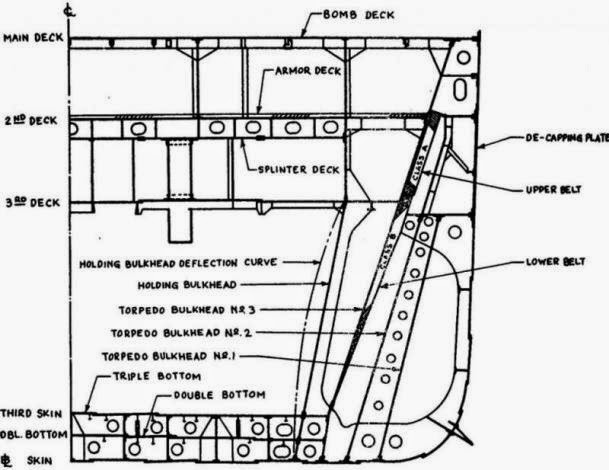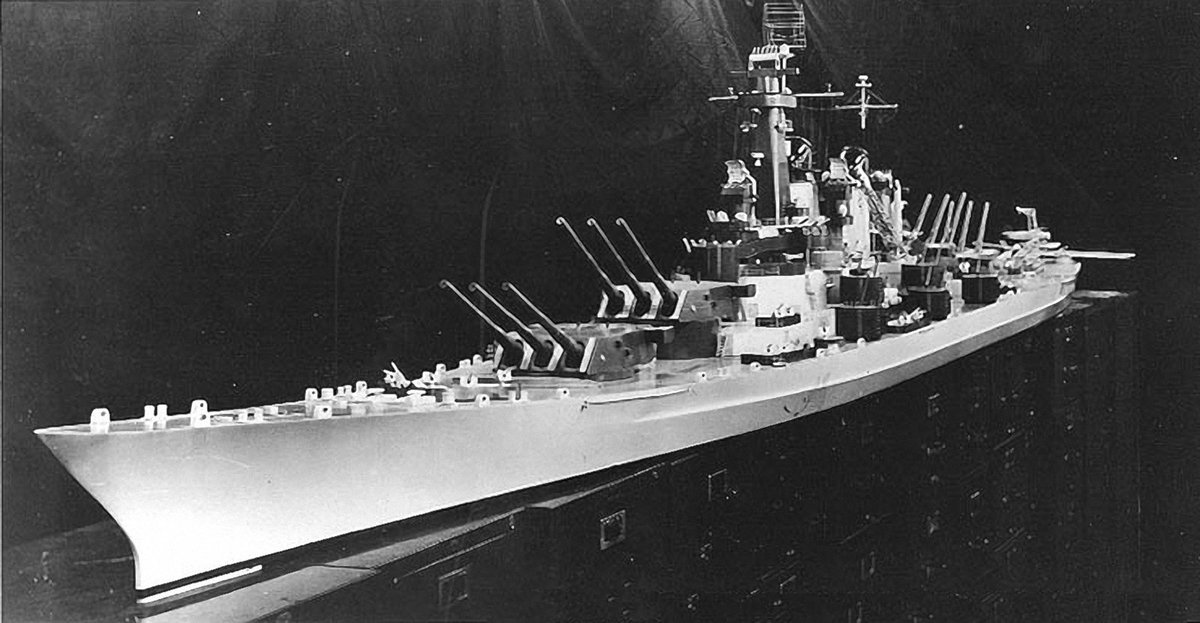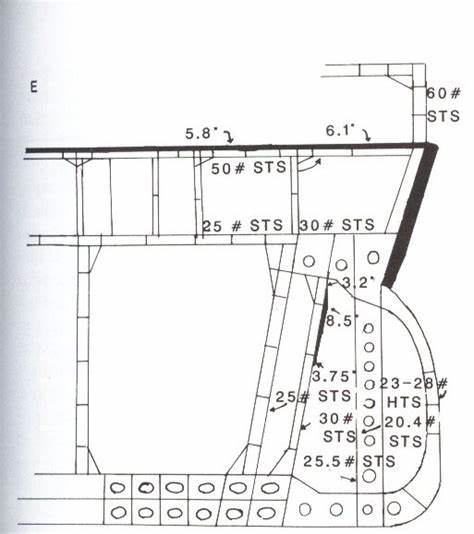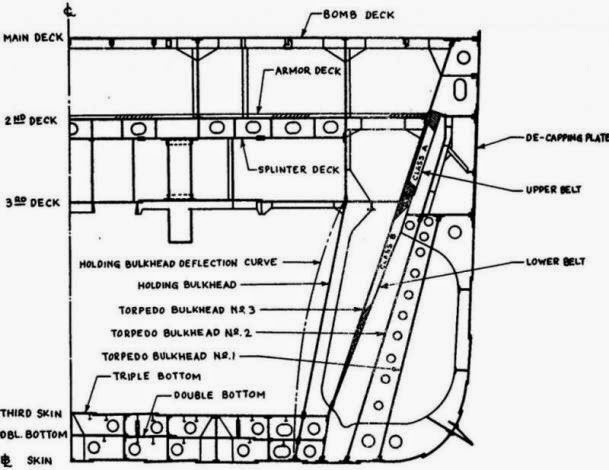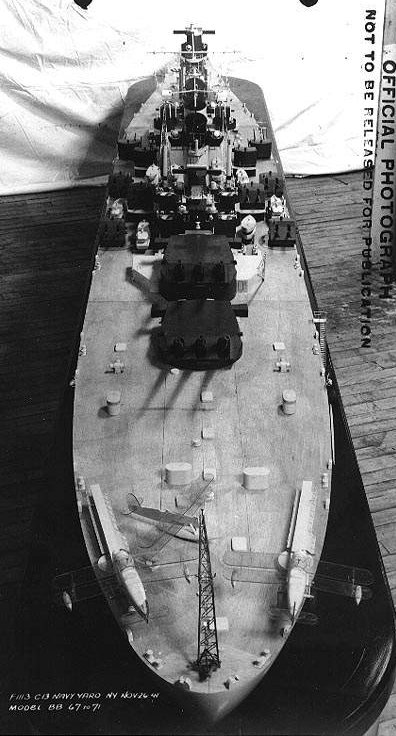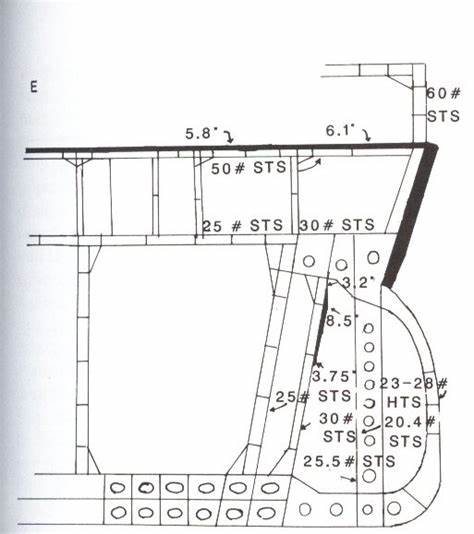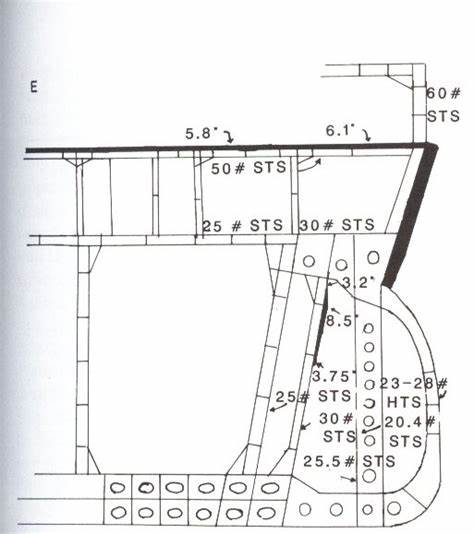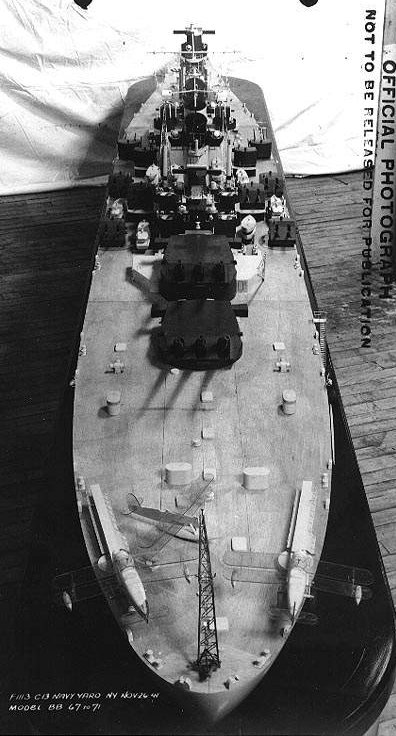In our previous series of posts, we looked at the armor scheme of the Iowa class battleship. We examined how the main belt was continued down to the bottom of the hull, acting as an additional armored bulkhead to prevent diving shells from penetrating the vitals.
Due to the rush to get the South Dakota and Iowa class ships into service, the negative features of the extended belt were not yet fully understood. Even the design of the Montana class was largely finalized as these faults were fully revealed through testing.
However, as luck would have it designers dispensed with the weight-saving internal armored belt used in the Iowa class in favor of the better-protected qualities of an externally mounted belt. This prevented the use of an extended belt, sparing the Montanas from the same faults.
However, designers were still very keen to prevent diving shells from penetrating under the belt.
They solved this dilemma by introducing a second armoured belt under the first, slightly lower and more inboard.
They solved this dilemma by introducing a second armoured belt under the first, slightly lower and more inboard.
This secondary belt ran the length of the citadel. It ranged in thickness from 8.5" (216mm) over the magazines to 7.2" (173mm) over the power plant.
This secondary belt extended to the bottom of the hull, tapering down to a thickness of 1" (25mm) at its bottom.
This secondary belt extended to the bottom of the hull, tapering down to a thickness of 1" (25mm) at its bottom.
Just like the Iowa class, the Montana class utilized four void compartments for the torpedo defense system. The outer two were liquid-filled while the inner two (on either side of the secondary belt which formed the bulkhead between them) were left empty.
Now, if we spent an entire series explaining why the Iowa class had a flawed torpedo defense system due to the extended belt. The Montana class, with its secondary belt that extended to the hull bottom, should also be similarly flawed? Right?
Well, yes and no.
Yes in regard that the secondary belt was still too thick and did not handle an underwater detonation well due to its inability to flex with the blast wave.
No because the Montana class had several other features that helped make up for this issue.
Yes in regard that the secondary belt was still too thick and did not handle an underwater detonation well due to its inability to flex with the blast wave.
No because the Montana class had several other features that helped make up for this issue.
1) The secondary belt was disconnected from the main belt. It had slightly more give due to this and could be influenced independently of the main belt.
2) Disconnected from the main belt, designers were free to place the secondary belt in a more optimal location in the hull.
2) Disconnected from the main belt, designers were free to place the secondary belt in a more optimal location in the hull.
3) Due to its greater beam, the Montana class enjoyed a significantly deeper underwater protection system. At its maximum, the system was 20.5& #39; (6.25m) vs 17.9& #39; (5.46m) of the Iowa class or even the 18.5& #39; (5.64m) system of the North Carolina class.
This was achieved while still protecting the battleship against diving shells.
So while the thicker belt did less for underwater explosions (Just like the Iowa class), the system made up for it by having several other advantages not available to the Iowa class.
So while the thicker belt did less for underwater explosions (Just like the Iowa class), the system made up for it by having several other advantages not available to the Iowa class.
Overall, it was a compromise that led to a vastly superior underwater protection system. A system that was almost equally adept at handling a diving shell as it was a torpedo or mine.
Of course, its also a lesson in what can be a achieved once designers are not limited by tonnage and size restrictions. Many of the design features of the South Dakota and Iowa classes, even ones that were poor, were adopted as compromises to meet restrictions.
The Montana class provided a rare opportunity for the US Navy to design a ship with little compromise. This was evident in the massive increase in fighting power compared to previous designs.
#Battleship #KnowyourMil #SaturdayThoughts #SaturdayMotivation #History #USNavy #WW2
#Battleship #KnowyourMil #SaturdayThoughts #SaturdayMotivation #History #USNavy #WW2

 Read on Twitter
Read on Twitter